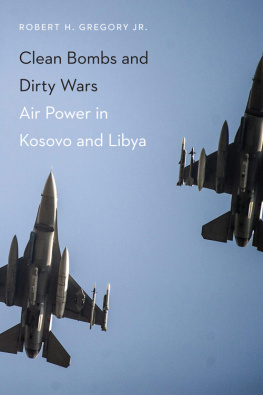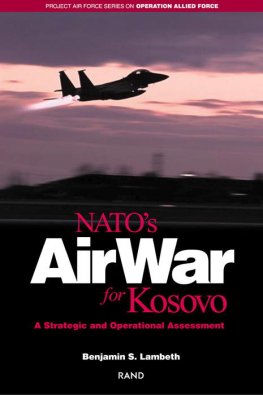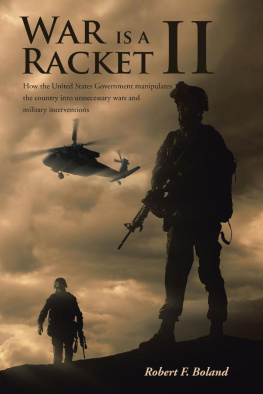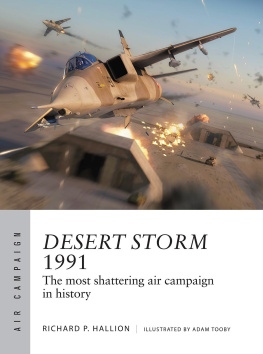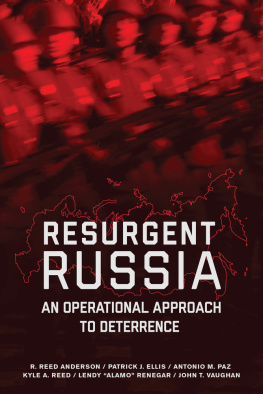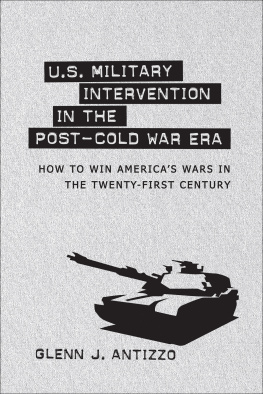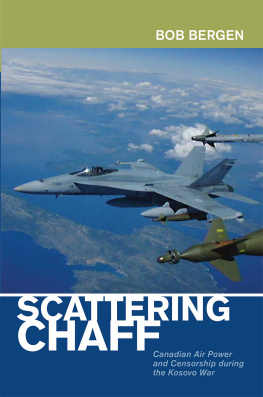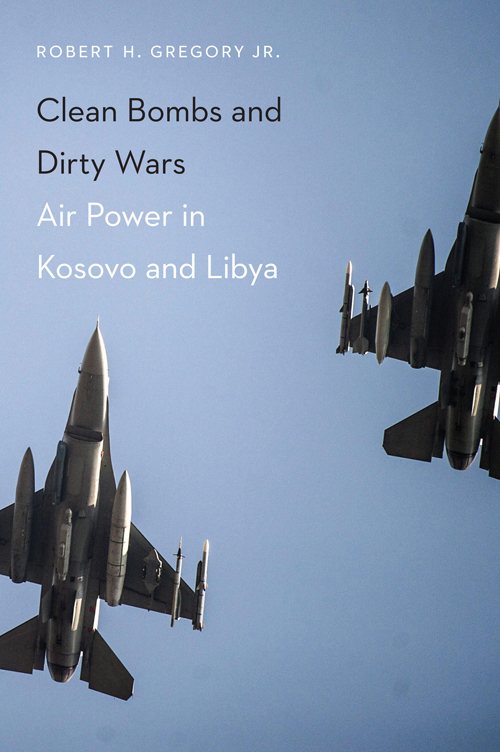Robert H. Gregory - Clean Bombs and Dirty Wars: Air Power in Kosovo and Libya
Here you can read online Robert H. Gregory - Clean Bombs and Dirty Wars: Air Power in Kosovo and Libya full text of the book (entire story) in english for free. Download pdf and epub, get meaning, cover and reviews about this ebook. year: 2015, publisher: Potomac Books, genre: Politics. Description of the work, (preface) as well as reviews are available. Best literature library LitArk.com created for fans of good reading and offers a wide selection of genres:
Romance novel
Science fiction
Adventure
Detective
Science
History
Home and family
Prose
Art
Politics
Computer
Non-fiction
Religion
Business
Children
Humor
Choose a favorite category and find really read worthwhile books. Enjoy immersion in the world of imagination, feel the emotions of the characters or learn something new for yourself, make an fascinating discovery.
- Book:Clean Bombs and Dirty Wars: Air Power in Kosovo and Libya
- Author:
- Publisher:Potomac Books
- Genre:
- Year:2015
- Rating:3 / 5
- Favourites:Add to favourites
- Your mark:
Clean Bombs and Dirty Wars: Air Power in Kosovo and Libya: summary, description and annotation
We offer to read an annotation, description, summary or preface (depends on what the author of the book "Clean Bombs and Dirty Wars: Air Power in Kosovo and Libya" wrote himself). If you haven't found the necessary information about the book — write in the comments, we will try to find it.
After the United States, along with NATO allies, bombed the Serbian forces of Slobodan Milosevic for seventy-eight days in 1999, Milosevic withdrew his army from Kosovo. With no troops on the ground, political and military leaders congratulated themselves on the success of Operation Allied Force, considered to be the first military victory won through the use of strategic air power alone. This apparent triumph motivated military and political leaders to embrace a policy of using clean bombs (precision munitions and air strikes)without a dirty ground waras the preferred choice for answering military aggression. Ten years later it inspired a similar air campaign against Muammar Gaddafis forces in Libya as a groundswell of protests erupted into revolution.Clean Bombs and Dirty Wars offers a fresh perspective on the role, relevance, and effectiveness of air power in contemporary warfare, including an exploration of the political motivations for its use as well as a candid examination of air-to-ground targeting processes. Using recently declassified materials from the William J. Clinton Presidential Library along with primary evidence culled from social media posted during the Arab Spring, Robert H. Gregory Jr. shows that the argument that air power eliminates the necessity for boots on the ground is an artificial and illusory claim.
Robert H. Gregory: author's other books
Who wrote Clean Bombs and Dirty Wars: Air Power in Kosovo and Libya? Find out the surname, the name of the author of the book and a list of all author's works by series.

